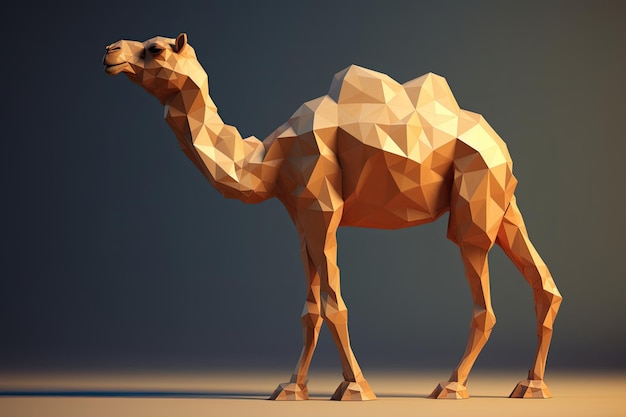Title
Title with line break
Subtitle
Subtitle after linebreak
Fekete színkód: #030414
Zöld színkód: #00c7b1
Pink színkód: #cd2371
Kék színkód: #2e7b9b
Sárga színkód: #d7a14f
Ever since the word ‘unicorn’ was first coined by Aileen Lee in 2013, the main goal of privately held startups has been to become this mythical animal. The term was chosen to represent the statistical rarity of such success because, to achieve the status of a ‘unicorn company’ its value has to reach over $1 billion just within their first decade of operation.
But it seems that the unicorn vision has become outdated, and entrepreneurs are advised to seek other options. Let’s inspect how the entrepreneurial zoo has broadened with other desirable animals that a startup should strive to resemble!
What animal your startup resembles
in 2023
Turning into a unicorn was the ultimate ‘nirvana’ moment for both venture capital and startup founders. The identity of the first ever Unicorn is still a debated topic, naming Google, Facebook and Airbnb in the process. Considering that the now Meta company, Facebook was the first to reach the $1 billion threshold out of the three – in a record time of 396 days – it makes sense to hypothetically crown it with the banner of the first unicorn startup.
Speaking of the startups that now hold the title, there are more than 1200 unicorns as of July 2023, according to the list of CB Insights. The largest unicorns include ByteDance, DiDi, Stripe, and SpaceX.
However, a few critics claim that it is not favourable to haunt these mythical creatures because it requires a growth-at-all-costs mentality that undervalues, and sometimes downright ignores, unit economics, not to mention all the unquantifiable factors that make businesses thrive.
‘Signing up for Silicon Valley’s unicorn-hunting strategy is a bit like mortgaging your home to buy three new homes,’ said Alexandre Lazarow, a venture capitalist at Cathay Innovation.
In the past pandemic situation, Lazarow advised founders to aspire for other, more realistic mascots. Leave behind the unicorn hunt and aim to become a camel, a zebra or a gazelle.
We are here to guide you on a tour to the entrepreneurial zoo!
The
Camel:

According to an online tracker, Layoffs.fyi almost 220 000 tech startup employees have lost their jobs in the first half of 2023. Although not in every case, but the necessity to lay off employees often stem from the company’s struggle to operate. However, there is an animal that is well-known to endure long dry seasons with little to no sustenance. Camels have the ability to survive without water up to 10 days, and these characteristics make them unique and resistant animals.
Companies that gained this marker did so by sharing these qualities. In fact, those businesses are able to maintain their activity regardless of whether they gain access to financing or not. Unlike other companies, camel startups are not affected deeply by adverse times. And this was also proven a favourable characteristic during the not foreseeable COVID-19 pandemic.
If you wonder what makes a camel startup so good at adapting, here are the answers: they have proper added value that they offer, moreover their design and development of contingency plans make them a good survivor. Furthermore, important characteristics are their low fix costs and their focus on organic growth. Finally, their diversification of their business model and their long-term vision help them get through tough times.
Be a Camel company like…
Amazon. A good example for a camel is the rightly famous American company, that could operate at a loss for many years. The foundation of this success was their willingness to re-invest their heavily into their own growth, research and development.
We can also mention the experience management software company, Qualtrics from the U.S., a business that used their profits to fund growth for many years, scaling at a reasonable rate and declining early interest from VCs. The key strategy for them was thinking in long-term because they understood that building a successful business starts with a strong foundation that is built to last.
Why is a Camel better than a unicorn?
It is important to understand that we are weighing up two totally different business models, so comparing them is not an easy task. But it is common knowledge that Camels depend less on venture funding than unicorns. While unicorns rule their market with massive customer potential and almost exclusive control, camels get through critical times and crisis without any major effort and they are hand-picking their investors, as to only choose the perfect match.
All together we can say that camels take a diverse growth path than a unicorn, by choosing lower-risk options and fueling their processes with subsidized or free product.
Nagy új Headnig

Having these terms helps us sorting out the initially hectic world of the startups, making them easier to categorise. But even though it helps new startups to get an understanding what to strive for, it does not offer any guideline on how to achieve it, making them out to be only fun and descriptive titles. However, in a world as fast-changing and evolving as that of startups, it is perhaps better not to have a restrictive set of guidelines that can hinder development.
If you would like to know more about the world of startups, or have any questions regarding starting one, do not hesitate to contact us, or book consultation with one of our colleagues by clicking here.







